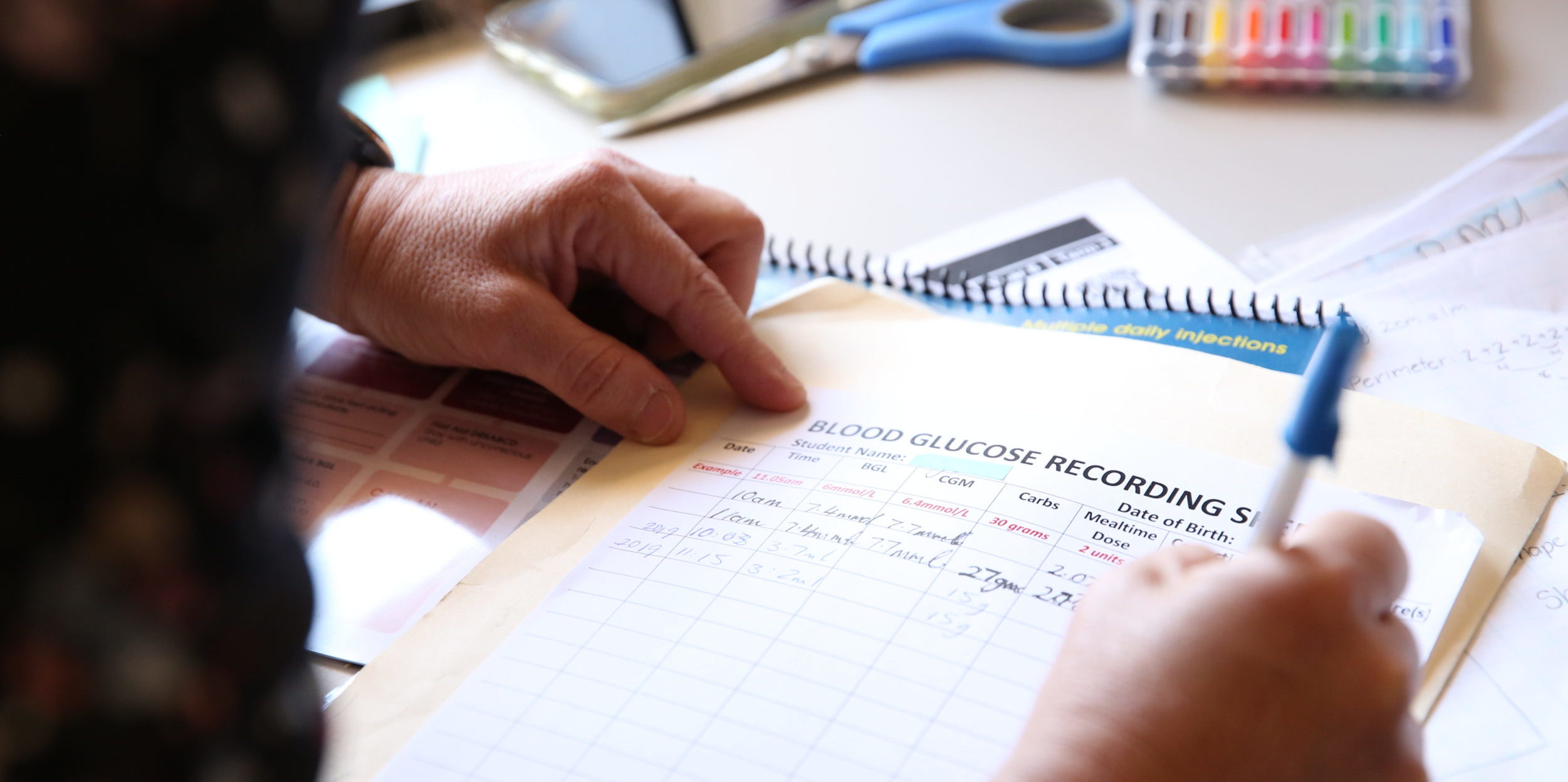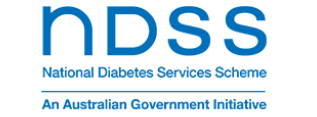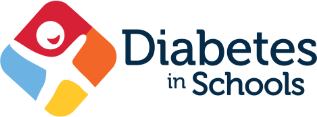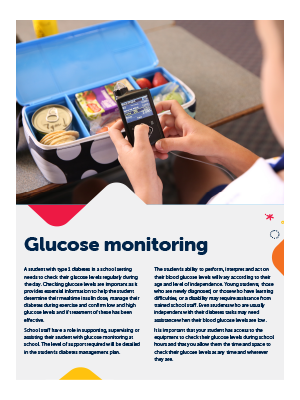Students with type 1 diabetes need to check their glucose levels regularly
Glucose levels will vary throughout the day and many factors can affect them.
Glucose monitoring can be performed using a finger prick blood glucose meter and/or a continuous glucose monitor.
Checking glucose levels provides essential information to help a student manage their type 1 diabetes – including determining insulin doses, managing their type 1 diabetes during exercise and monitoring and treating high and low glucose levels.
In general, students will need to check their glucose levels:
- before eating;
- before exercising;
- if the student is not feeling well;
- if the student is feeling ‘high’ or ‘low’;
- other times described in their diabetes management plan.
Each student will have their own glucose target range that will be determined by their diabetes treating team and will be documented in their diabetes management plan.
The student’s diabetes management plan will identify the level of school support a student will need with checking glucose levels.
To maintain optimal glucose levels requires a balance between carbohydrates, insulin and physical activity. Other factors may include illness, stress, and puberty. Managing type 1 diabetes is about understanding these factors and learning to adjust for them.
Monitoring glucose throughout the day assures the levels are not going too low or too high. It is important for students to be able to check their glucose levels and respond to levels that are too high or too low as quickly as possible. Students should be able to check glucose levels and act immediately wherever they are.
How often and when to monitor glucose levels varies from student to student. Times to monitor may include; before snack and lunch breaks; before, during and after physical activity; or when symptoms of hypoglycaemia or hyperglycaemia are suspected.
Many students can check their own glucose level; however, some students need supervision and others will need staff to do it for them. Younger students often need more monitoring and staff assistance.
Reasonable adjustments for monitoring glucose include:
- ensure student can glucose monitor in classroom at anytime;
- ensure glucose monitoring can be done immediately if student has signs and symptoms of low or a high glucose level;
- ensure student has access to bathroom to wash hands;
- ensure privacy is available for the student when checking blood glucose levels and injecting insulin, if required;
- if student is in detention or withdrawn from the classroom, glucose monitoring equipment and hypo kit must be accessible.









